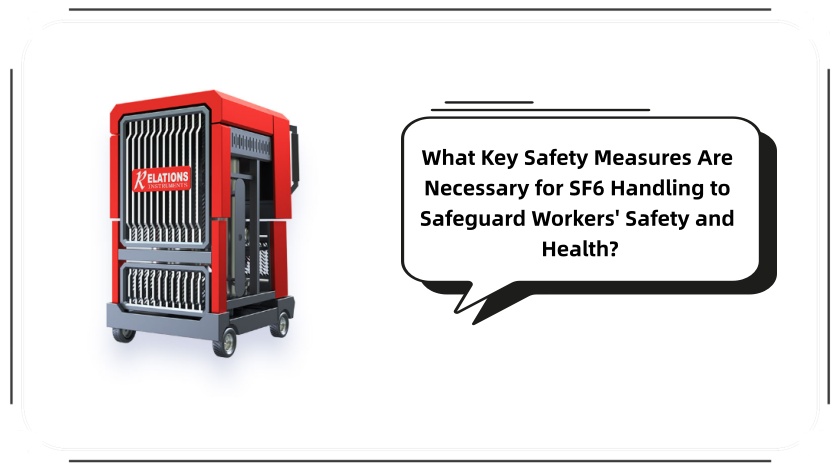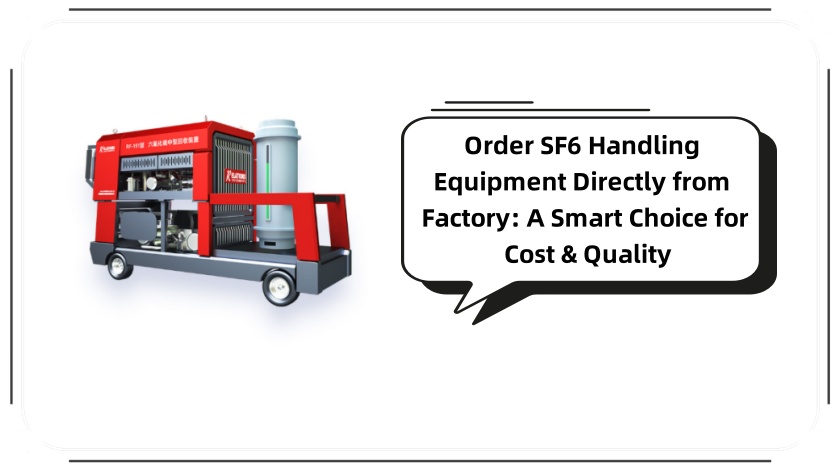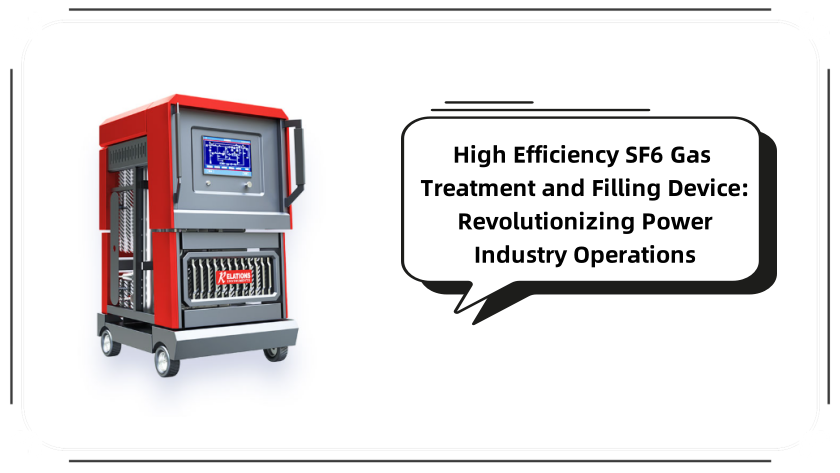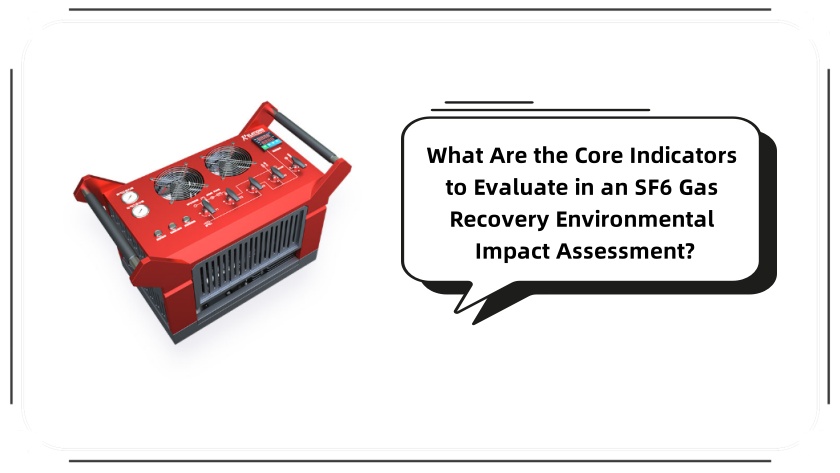What Key Safety Measures Are Necessary for SF6 Handling to Safeguard Workers' Safety and Health?

Sulfur hexafluoride (SF6) is widely used in the power industry for its excellent insulation and arc-extinguishing properties, critical for high-voltage equipment like circuit breakers and transformers. However, improper SF6 handling poses significant safety and health risks to workers. Prioritizing SF6 handling work safety and health is not only a legal requirement but also a core responsibility to protect personnel and ensure operational stability.
1. Key Risks in SF6 Handling
Understanding potential hazards is the first step in safeguarding workers.
Asphyxiation Risk: SF6 is 5.1 times denser than air, making it prone to accumulating in low-lying or enclosed spaces (e.g., equipment vaults). It displaces oxygen, leading to hypoxia and even fatal suffocation if concentrations exceed safe limits.
Toxic Decomposition Products: Under high temperatures (e.g., electrical arcs or equipment overheating), SF6 breaks down into toxic substances like hydrogen fluoride (HF), sulfur dioxide (SO₂), and carbonyl fluoride (COF₂). These gases irritate the respiratory tract, corrode skin and eyes, and cause long-term organ damage with prolonged exposure.
Physical Hazards: SF6 equipment is often heavy and high-voltage. Improper lifting during maintenance can cause musculoskeletal injuries, while uninsulated components risk electric shocks.
2. Critical Safety Measures for SF6 Handling
To mitigate risks, strict safety protocols must be implemented:
Pre-Work Risk Assessment: Evaluate the work environment (e.g., ventilation, space enclosure) and equipment status (e.g., leak history) before starting operations. Use SF6 gas detectors to monitor concentrations—ensure levels stay below the OSHA 8-hour time-weighted average (TWA) limit of 1,000 ppm.
Enhance Ventilation: In enclosed spaces, use forced mechanical ventilation (e.g., exhaust fans) to circulate air. Keep access points to low-lying areas open to prevent gas buildup.
Proper PPE Usage: Equip workers with gas-tight respirators (for toxic fumes), chemical-resistant gloves and goggles (to protect against HF), and insulated tools (to avoid electric shocks). Inspect PPE for damage before each use.
Standardized Operating Procedures (SOPs): Train workers to follow SOPs, such as:
Shutting off power to equipment before maintenance.
Using dedicated SF6 recovery systems to avoid gas release.
Posting warning signs around work zones to restrict unauthorized access.
3. Protecting Worker Health in SF6 Operations
Long-term health protection requires proactive measures:
Health Monitoring: Conduct pre-employment and annual medical checkups, focusing on respiratory function and skin health. Track workers’ exposure history to identify early signs of toxicity.
Emergency Response: Develop a contingency plan for leaks or exposure:
Evacuate workers immediately if concentrations spike.
Flush affected skin/eyes with water for 15+ minutes and seek medical care.
Administer oxygen to workers with breathing difficulties.
Continuous Training: Regularly update workers on risk awareness, PPE use, and emergency protocols. Use case studies of past accidents to reinforce compliance.
4. Compliance with Global Standards
Adhering to international standards ensures consistency in safety:
Follow IEC 60480 (guidelines for SF6 recycling and handling) to minimize gas release and exposure.
Align with EU REACH regulations, which restrict SF6 emissions and mandate safe disposal.
Comply with local laws (e.g., China’s GB 2894 standard for safety signs) to avoid legal penalties and reputational damage.
SF6 handling work safety and health is integral to sustainable operations in the power sector. By identifying risks, implementing strict safety protocols, protecting worker health, and complying with global standards, organizations can prevent accidents and safeguard their most valuable asset—their employees. Investing in SF6 safety not only reduces operational downtime but also aligns with environmental and social responsibility goals, creating a win-win for workers and businesses.
Leave A Message
Your email address will not be published. Required fields are marked *





